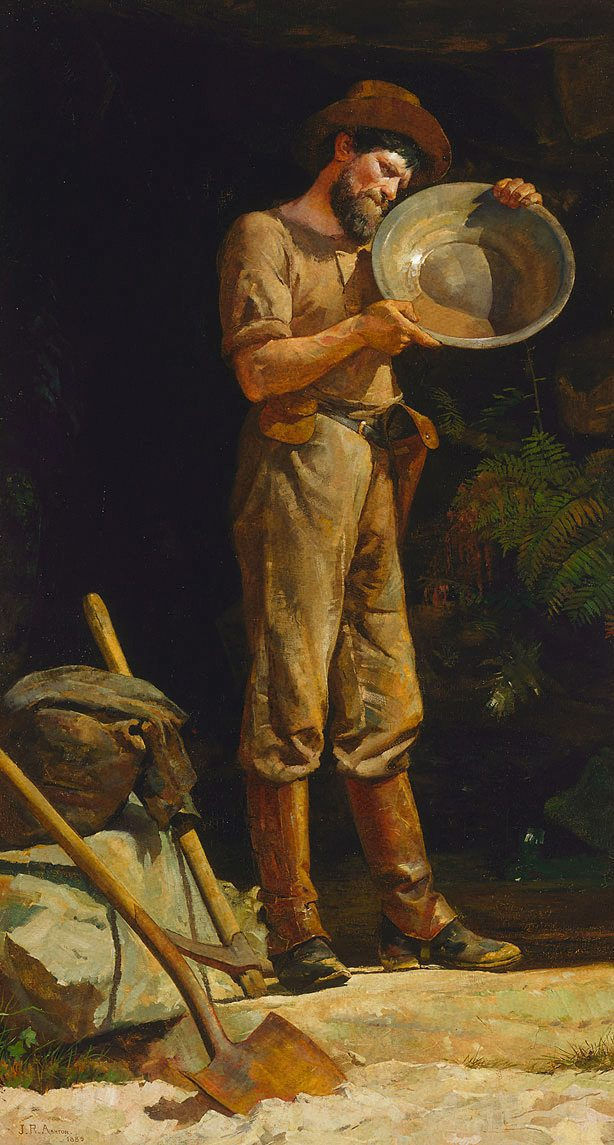Australian Literature Blog #3
- Jessica Aramini

- Aug 31, 2019
- 2 min read
CRITICAL BLOG
This is my response to the question: Write a brief summary of what you learnt in the gallery and/or focus on the one or two works that you found most challenging or interesting.
The tour on the 26th August 2019, to the Australian Art Gallery of N.S.W. provided a thought-provoking insight into the works of 19th and 20th century Australian artists. Several themes that were discussed regularly during the tour include colonial settlement, heroism, observational and realistic landscape and the transitional perception of Australian culture. Similar themes and discussion were made in regards to the 1882, oil on canvas painting by Julian Ashton titled ‘The Prospector’ and the 1906, oil on canvas work by W. Lister Lister, titled ‘The Golden Splendour of the Bush.’
Within his work, Ashton has depicted the heroism of ‘The Australian Character’, where the image of a prospector searching for evidence of gold is represented as a genuine Australian. His stained clothing and tanned skin, a symbol of hard work and gain within the New World; the concept of the ‘Australian Dream.’ I found this image interesting as Ashton has created a sense of grandeur and magnificence within the image, where the darkness in the background of the work is contrasted by the saturated yellow of the sun hitting The Prospectors’ face and body. The size of the work is also interesting to note (213.4cm x 116.9cm), as within history is was often only figures with great power and status that were depicted in such a large and grand scale. If one was truly analysing this work, it would be possible to justify that Ashton implies a sense royalty within the work, the notion that within Australia, bushmen hold power.
Similar to the concepts explored by Ashton, W. Lister Lister has studied and considered the native Australian Landscape, offering his own association to nature as majestic and affectionate. He also explores concepts of grandeur and dominance through the size and composition of the work. The viewers’ eyes are instantly drawn into the midground of the work, where a magnificent Sydney Red Gum tree stands at almost centre stage. The shadows to the left and the body of water in the right of the frame assists the viewer in creating special awareness in the work; establishing a sense of depth within the Australian bush. I think that opposed to the sensible and logical consideration and execution of the work; W. Lister Lister’s use of colour is significant in the general perception of nature in at the time. The use of pink hues of light surrounding the trees and water provides a magical and fantastical appearance of the Australian native bush. This use of pink can be linked to the artist and his personal connection to the rugged Australian flora, as pink is often associated with love and affection.
I believe the idea of the ‘Australian Dream’ and the rough “Aussie Outback” are still alive today and it intrigues me that these artworks in some way explores these concepts. Though the two artworks described and discussed above hold differing visual concepts, their meaning and symbolic similarities really highlight the perception of Australia, and its physical beauty as well as its changing culture.






A good choice for your best blog Jessica. I like the way you have linked the themes of both these paintings to the size and grandeur of the image. Good work.
The blog was very enjoyable to read, it analysed the paintings well and took into account the historical contexts of each painter. Being able to read into the paintings and spot the themes is very insightful, despite the themes being quite broad. The themes themselves are intriguing and the method in which the paintings chose to portray them were well regarded. Overall, it was a wonderful blog to read.
This was quite an enjoyable blog post to read. Your initial discernment of broad themes relating to the artwork within the gallery, and discussion within the tour, was insightful. It provided a great base from which the remainder of the post built upon. “The Prospector” is one of my favourite Australian artworks, and I really enjoyed your analysis of it. Your understanding of not only the elements that make up the physical construct of the artwork, but also the historical context surrounding it, created a holistic analysis. My advice would be to consider utilising your conclusion more effectively, to really tie in all of the elements that otherwise made up a brilliant blog post. I look forward to reading your…